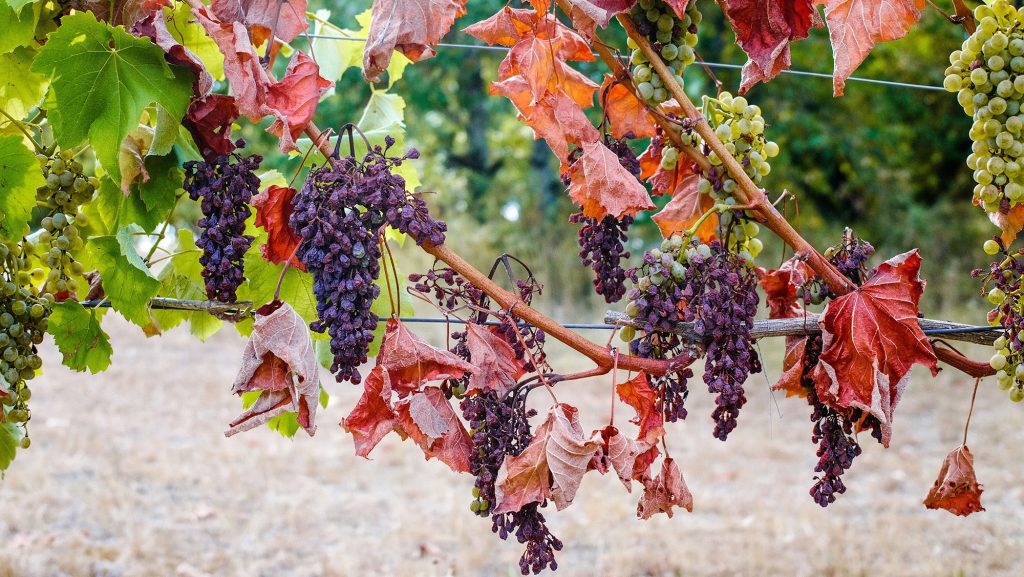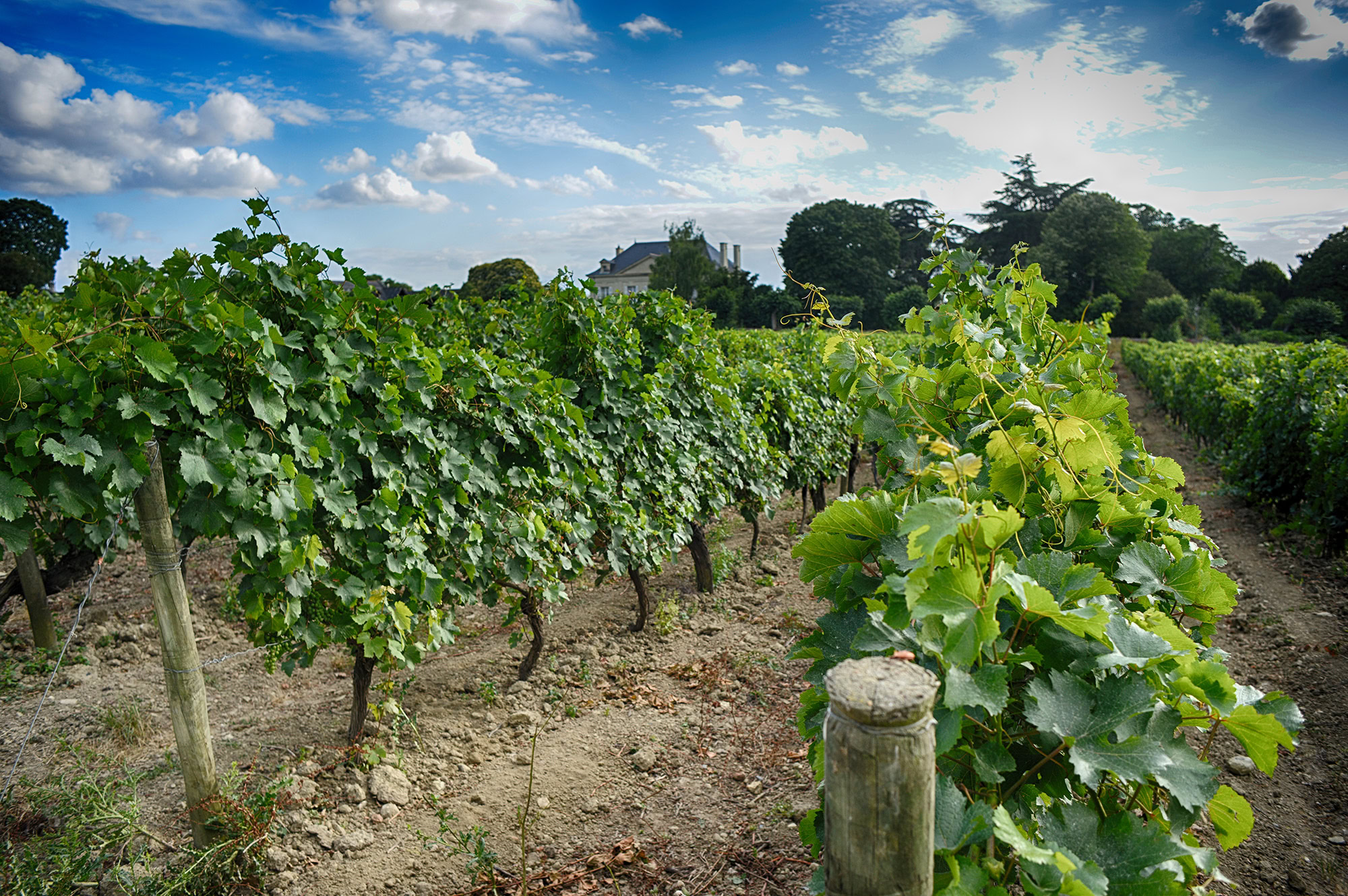Managing heat waves in vineyards: effective strategies for vine growers
Understanding heat waves
With climate change, prolonged heat waves are becoming more frequent and intense. It is vital for winegrowers to understand the extent of these phenomena so that they can adapt their practices and protect their vineyards.
Heat waves are periods with temperatures above 35-35°C that persist for several days. They can cause heat and water stress, affecting vine growth and grape quality.
However, it’s not just the temperature that defines a heat wave; the vapor pressure deficit (VPD) also plays a crucial role. VPD measures the difference between the amount of moisture in the air and the maximum amount the air can hold at a given temperature. A high VPD means the air is very dry, which increases the evaporation of water from the vine leaves. This leads to more intense water stress, as the vines lose water faster than they can absorb it.
These conditions of high heat and low humidity can cause both thermal and water stress, affecting vine growth and grape quality.
Identifying the risks for vineyards
Heat waves do not affect all vineyards in the same way. Different factors, such as geographical location, soil type and the age of the vines, influence the vulnerability of vineyards to these extreme conditions.
Vineyards in the Mediterranean or in arid regions are at greater risk.
Soils poor in organic matter, such as light and sandy soils can weaken plants. Young or poorly rooted vines are also more vulnerable.
What impact do high temperatures on vines?
High temperatures can have a variety of, often negative, effects on vines. It is crucial to understand these impacts to adopt effective management strategies.
High temperatures contribute to stomatal closure, reducing photosynthesis and metabolic processes. Another impact is the acceleration of ripening, which can lead to over-ripening of the grapes. Finally, high temperatures can lead to undesirable changes in the chemical composition of the grapes, altering the sugar/acid balance and, ultimately, the taste of your wine. These effects are mainly due to the breakdown of organic acids and an increase in sugar levels, resulting in wines that lack ‘freshness’ and have higher alcohol contents.
In fact, high temperatures accelerate respiration and gluconeogenesis, processes that consume the malic acid accumulated during fruit ripening. Heat waves can also impact wine aromas. These are derived from various volatile compounds that are influenced by the growing conditions of the grapes. Heat can alter the concentration and profile of these aromatic compounds, affecting the bouquet and complexity of the final wine. Anthocyanines are also negatively affected by high temperatures, resulting in lighter colouring red wines.
Heat damage
Beyond direct heat stress, hot weather can cause various types of damages in vineyards. Proactive management is to minimising these risks.
Grape berries exposed to direct sunlight can suffer significant damage. High temperatures can cause sunburn, which manifests itself as brown and necrotic spots on the berries and results in dried up berries and leaves. This damage can not only reduce the quality of the fruit but also increase its susceptibility to infection and disease.
Water stress is another crucial factor linked to high temperatures. When exposed to these conditions, vines need more water to maintain their physiological functions. Without adequate irrigation, this can lead to excessive water stress. Lack of water can reduce photosynthesis, slow growth and decrease sugar production in the berries.
Heat stress can also disrupt the absorption of nutrients by the vines. For example, the absorption of nitrogen, an essential element for plant growth and development, can be significantly reduced as a result of heat stress, especially when the soil is dry. This nutritional deficiency can weaken vines, making them more vulnerable to disease and reducing their ability to produce high-quality grapes.

What strategies can be used to protect vineyards from heat peaks ?
Fortunately, there are several strategies you can implement to protect your vineyard from the effects of heat waves. Adopting appropriate practices can help to maintain the health of the vines and the quality of production.
- Targeted irrigation: Irrigate in large quantities and less frequently, to encourage the roots to go deeper into the soil. Pre-irrigating before a heatwave to
- Adjust phytosanitary treatments: Avoid treatments withsulphur, terpenes or essential oils during high heat and sunny conditions, as they can cause burns.
- Canopy management: Prune and orientate your vines to maximise shade on the grapes. Favour an east-west orientation to reduce the exposure of the bunches.
- Mulching: Use mulch to retain soil moisture and reduce evaporation.
- Cover crop: Mow the canopy between the rows but do not leave the soil bare.
Embrace technology
Modern technology can be a huge help in managing your vineyard during heat waves. Decision Support Tools like Vintel® provide alerts and irrigation advice tailored to heat events, helping you stay proactive.
By understanding and applying these strategies, winegrowers can better protect their vineyards from the harmful effects of heat waves and maintain the quality of their production.
For more information, please contact us: Vintel® » Contact us | Vintel® (vintel-itk.com)
Contact us now and ask for a demo!



